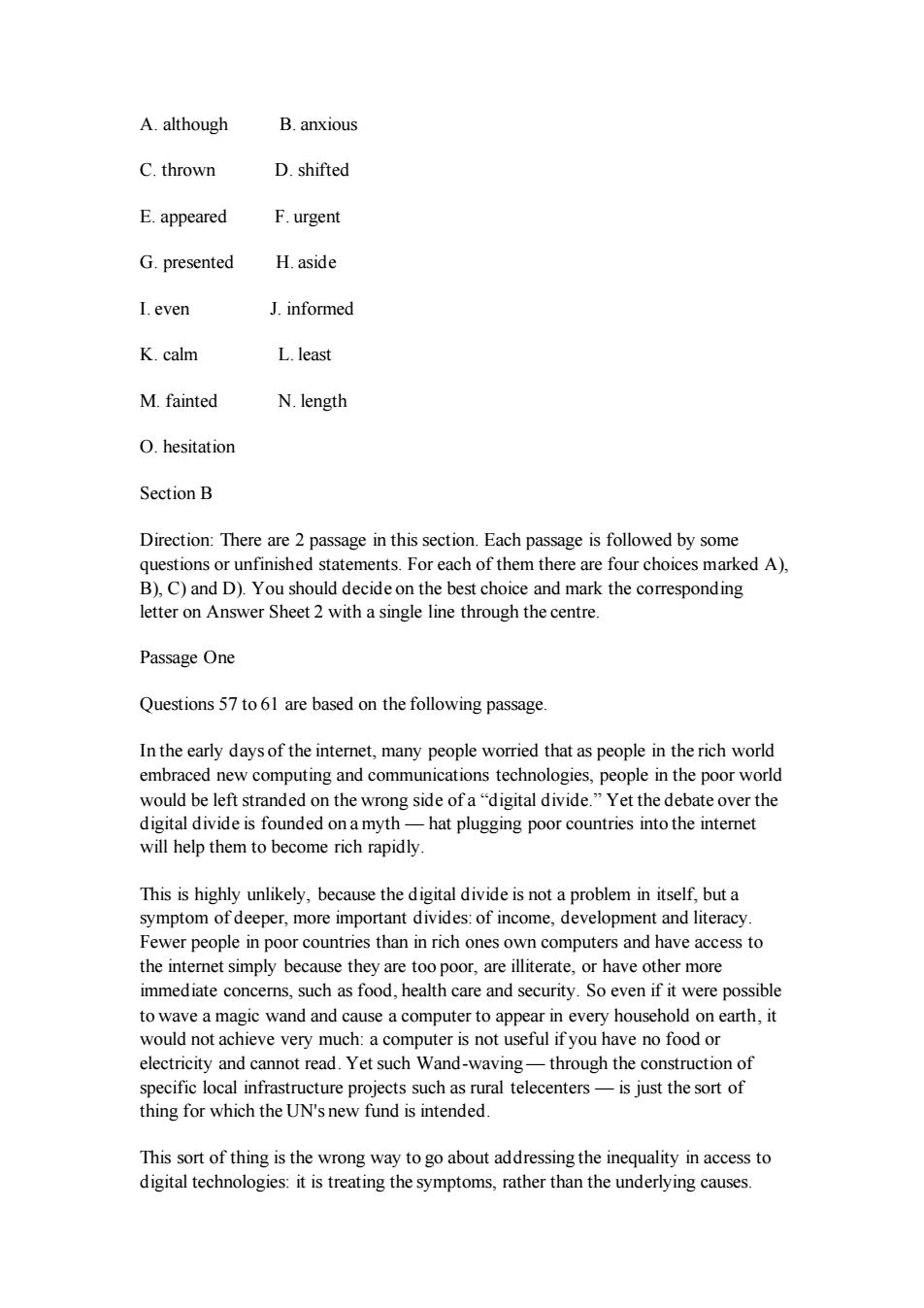正在加载图片...

A.although B.anxious C.thrown D.shifted E.appeared F.urgent G.presented H.aside I.even J.informed K.calm L.least M.fainted N.length O.hesitation Section B Direction:There are 2 passage in this section.Each passage is followed by som questions or unfinished statements.For each of them there are four choices marked A), B),C)and D).You should decide on the best choice and mark the corresponding letter on Answer Sheet 2 with a single line through the centre. Passage One Questions 57to61 are based on the following passage Inthe early daysof the intemet,many people worried that as people in the rich world embraced new computing and communications technologies,people in the poor world would be left stranded on the wrong side of a"digital divide."Yet the debate over the digital divide is founded onamyth-hat plugging poor countries into the intemet will help them to become rich rapidly This is highly unlikely,because the digital divide is not a problem in itself,but a symptom of deeper,more important divides:of income,development and literacy Fewer people in poor countries than in rich ones own computers and have access to the internet simply because they are too poor,are illiterate,or have other more immediate concerns.such as food.health care and security.So even if it were possible would not achieve very much:a computer is not useful ifyou have no food or electricity and cannot read.Yet such Wand-waving-through the construction of specific local infrastructure projects such as rural telecenters-is just the sort of thing for which the UN's new fund is intended. This sort of thing is the wrong way to go about addressing the inequality in access to digital technologies it is treating the symptoms, rather than the underlying cause A. although B. anxious C. thrown D. shifted E. appeared F. urgent G. presented H. aside I. even J. informed K. calm L. least M. fainted N. length O. hesitation Section B Direction: There are 2 passage in this section. Each passage is followed by some questions or unfinished statements. For each of them there are four choices marked A), B), C) and D). You should decide on the best choice and mark the corresponding letter on Answer Sheet 2 with a single line through the centre. Passage One Questions 57 to 61 are based on the following passage. In the early days of the internet, many people worried that as people in the rich world embraced new computing and communications technologies, people in the poor world would be left stranded on the wrong side of a “digital divide.” Yet the debate over the digital divide is founded on a myth — hat plugging poor countries into the internet will help them to become rich rapidly. This is highly unlikely, because the digital divide is not a problem in itself, but a symptom of deeper, more important divides: of income, development and literacy. Fewer people in poor countries than in rich ones own computers and have access to the internet simply because they are too poor, are illiterate, or have other more immediate concerns, such as food, health care and security. So even if it were possible to wave a magic wand and cause a computer to appear in every household on earth, it would not achieve very much: a computer is not useful if you have no food or electricity and cannot read. Yet such Wand-waving — through the construction of specific local infrastructure projects such as rural telecenters — is just the sort of thing for which the UN's new fund is intended. This sort of thing is the wrong way to go about addressing the inequality in access to digital technologies: it is treating the symptoms, rather than the underlying causes